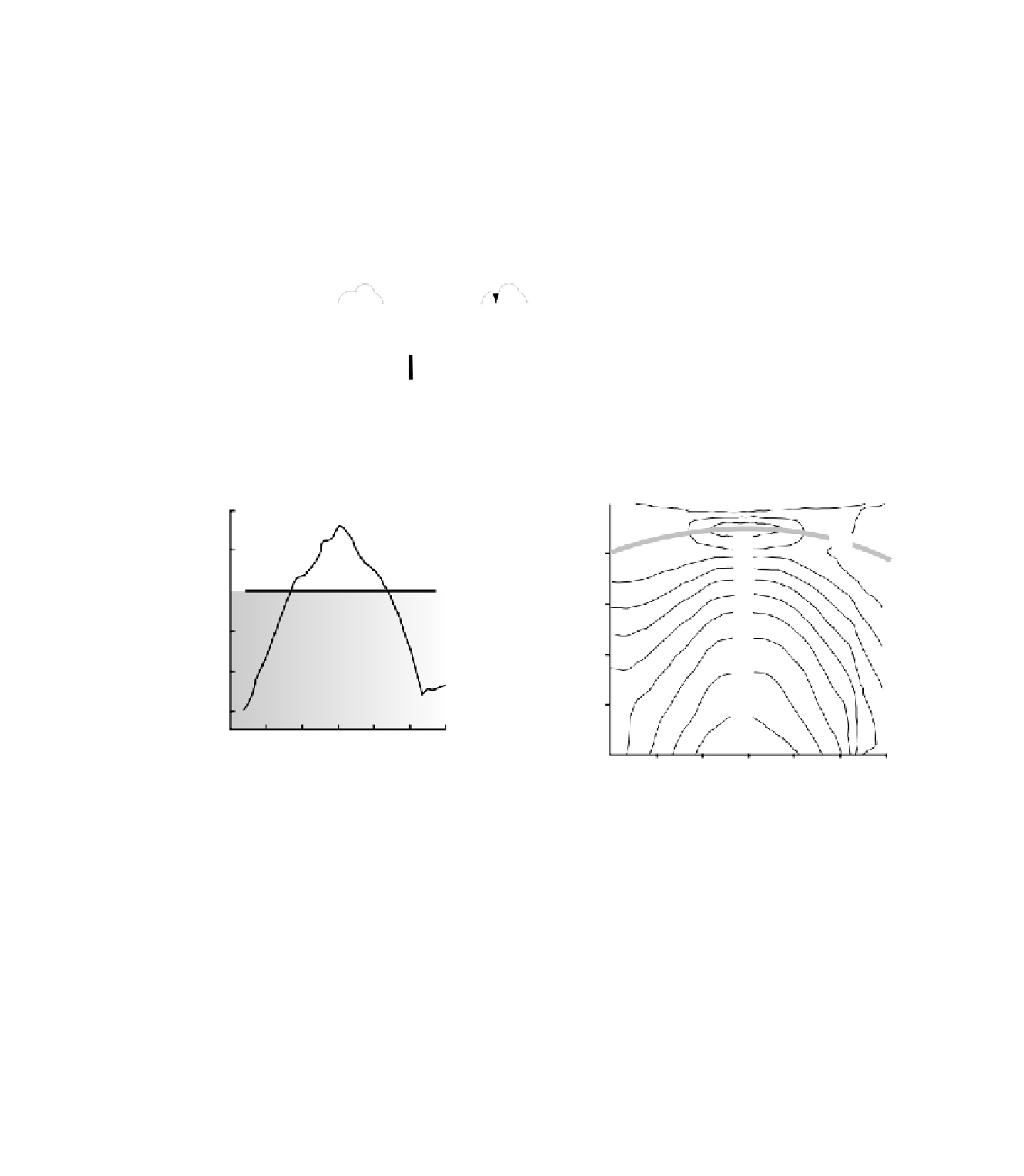Geoscience Reference
In-Depth Information
Incoming
radiation
Outgoing
radiation
100 units IN
100 units OUT
short
wavelength
short wavelength
Long wavelength
Space
68
32
Absorption
by 0
3
Stratosphere
Backscatter
by
clouds
23
9
Absorption
by atmosphere
and clouds
Emission by H
2
O,
CO
2
, and clouds
19
Absorption
Heat transport by
atmospheric mixing
Troposphere
Dust,
aerosols
reflection
back
Sensible
heat
in thermals
Latent
heat
49
+
Hydrosphere
Lithosphere
Net longwave
reradiation
Absorption of
direct solar
radiation
Absorption of
diffuse sky and
cloud radiation
Heat transport by
ocean currents
Fig. 6.1
Energy transport in and out of the atmosphere.
+80
190
210
230
240
250
260
270
210
+40
200
Surplus
0
Deficit
400
-40
600
-80
280
800
-120
290
90N
60
30
0
30
60
90S
1000
Latitude (degrees)
90N
60
30
0
30
60
90S
Fig. 6.2
Net annual zonally averaged radiative flux (shortwave
absorbed flux minus outgoing longwave flux) from the top of the
atmosphere.
Latitude (degrees)
Fig. 6.3
Zonally averaged atmosphere temperature (
K) from equa-
tor to pole according to a global climate model based on sea-surface
temperatures over a 10-year period. Note the vertically persistent
equator-to-pole temperature gradient, its decrease with altitude, and
the poleward thinning of troposphere. Also note strong baroclinicity
away from equator (see discussion of “thermal wind”).
equal-pressure surfaces (isobaric surfaces): in other words,
the baroclinic condition (Section 3.5) dominates.
6.1.2 Thermal wind, pressure gradients, and origin
of large-scale global circulation
gradients from equator to pole and (ii) strong vertical
density gradients set up by differential thermal heating and
cooling of land and sea in equatorial latitudes. We consider
feature (i) here and (ii) in a later section.
The most fundamental features governing global atmos-
pheric circulation (GAC) are: (i) strong negative thermal





































Search WWH ::

Custom Search